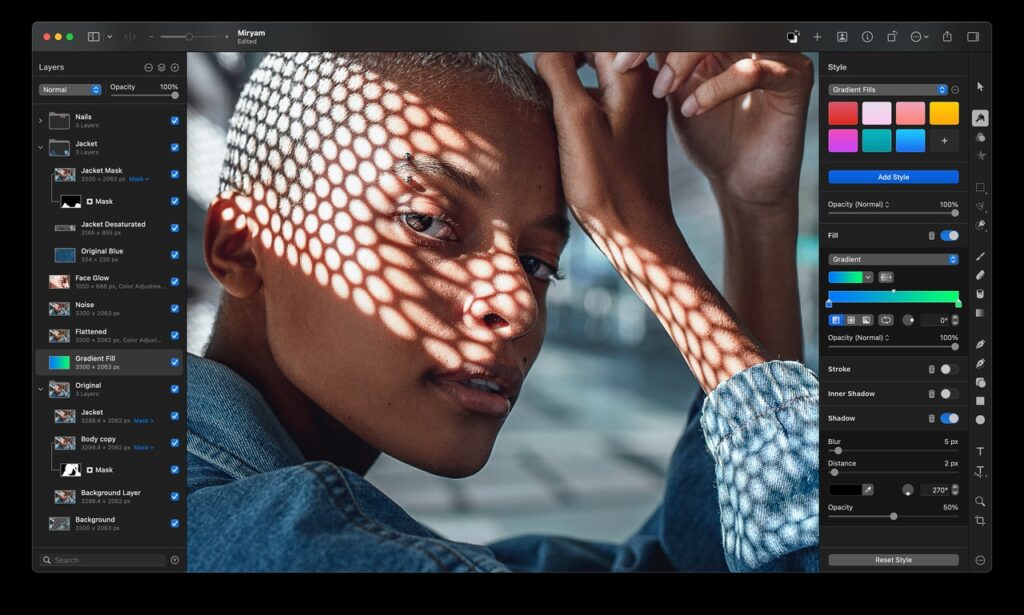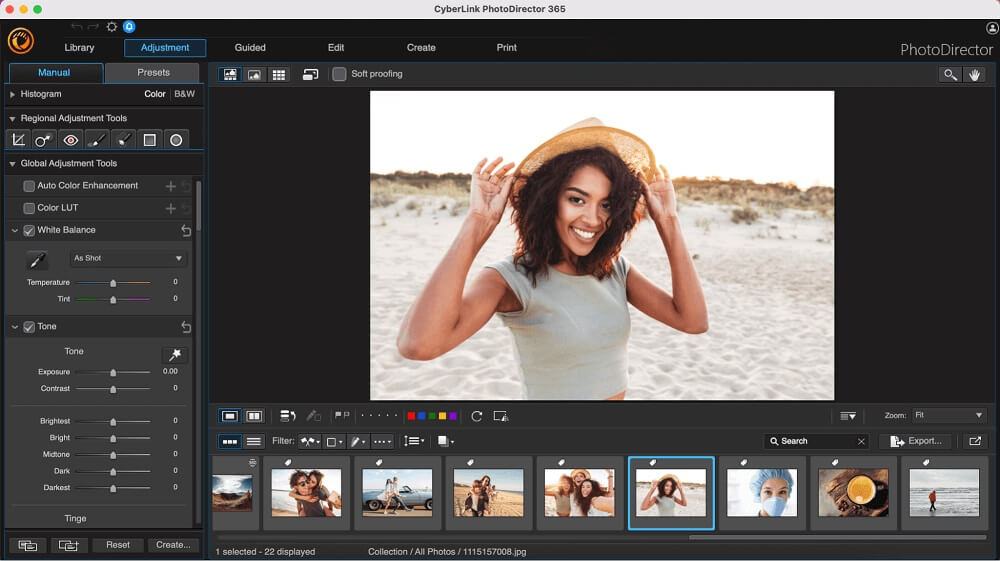A look from the future: how photo editors are changing
A glimpse into the future, evolution of photo editors and revolutionary changes
Get the insights into the future of photo editors with the help of our comprehensive guide on cutting edge advancements that are going to shape the world of image editing. Understand the technologies that promised to redefine your visual storytelling experience and stay ahead in dynamic landscape of digital imaging.
To understand how many photo editors have penetrated into our lives, one fact is enough: 68% of adults edit their selfies before posting them on social networks or sending them to someone. Will users only need this in the future, why Photo editors are turning into multifunctional creative and educational platforms, and how artificial intelligence and neural networks will help create original content, says Mikael Vardanyan, CPO and PicsArt co-founder.
The photo editors of the future is not a photo editors
Users quickly lose interest in new, even unusual, tools and are looking for something else. It turns out that continuous updating and expansion of functionality is the only way to stay on top of popularity for the photo editors of the future?

The conclusion is not entirely correct. We see that advanced products with a lot of tools for professional photographers and designers are perceived by Gen Z – active users of gadgets – quite difficult. They are not ready to spend weeks and months learning the functions, as they are accustomed to quick results that bring pleasure here and now. So few people get to “serious” software, and even fewer people stay with it. With an increase in the number of smartphones, mobile content editing applications are gradually replacing desktop solutions, where you cannot do without a keyboard, mouse and, ideally, a graphics tablet.
Today, users are looking for platforms that allow them to quickly and intuitively solve all kinds of tasks related to the creation of unique photo and video content, instead of monofunctional applications. According to the data cited by the CEO of Texmobile Hussain Fakhruddin in his article, in 2016, users quickly removed up to 83% of applications on the iPhone and 90% on Android (30% – 10 minutes after downloading). Other data from 2020 show that, 30 days after installation, only 3.8% of users returned from the entertainment category, and 2.5% from the education segment.
In the case of photo editors, multifunctionality makes it possible to simultaneously edit photos, videos, supplement creative ideas with music, stickers and other content. At PicsArt, our focus is on making a one-stop platform for creators that will allow them to be inspired and create content for a variety of situations in any format.
In our view, the popular photo editors of the future is a creative platform for inspiration and creative expression, not just editing tools. Artificial intelligence helps the user in this.
Not too artificial, but intelligence
Artificial intelligence is in the focus of attention of both business and government. In Russia, there is a federal strategy for the development of AI until 2030 – RUB 31.5 billion will be invested in it until 2024. In the segment of photo editors, AI will be the main technology for the coming years. To remain relevant to users, a creative platform must balance two areas:
- Automation of visual decisions: when AI independently improves images according to the rules of composition, taking into account the color combinations, lighting and the author’s idea.
- Auxiliary functions (user delivery): the right moment the software tells you which tool to use, how to try something new and non-standard for the best result.
In a creative platform, it is important to automate the process of creating content, and to provide those tools that will help the user to do something himself. There are times when AI is needed – it simplifies the editing process and takes care of routine operations (for example, smoothing skin tones or getting rid of noise and graphic artifacts), allowing a person to focus on creativity and his vision to create a unique piece.

AI helps users create from the moment they download the app: For first-time users of PicsArt, we’re introducing features so that newbies can quickly get high quality results and understand the app, while AI creators offer new tools to keep them interested and develop creative skills. … For example, on the main page, the AI shows Replay tutorials, depending on previous edits or “trending” in a given geography, and on the search page – relevant and popular content: stickers, backgrounds, and works of other users.
Users can also choose from an endless number of audio tracks. Infinite, because the music is created by a neural network – each new composition is different from all the previous ones. You can publish your photos and videos with such tracks on YouTube, TikTok, Instagram and other social networks without violating copyright.
Plastic vs creativity
Changes in fashion and attitudes towards beauty directly affect photo and video editing tools. Generation Z and millennials are no longer so interested in the gold standards of beauty, therefore they often refuse to create glossy images and face plastics, advocating naturalness and creative presentation of “imperfect selves”. It also removes the problem of deepfakes – it is simply impossible to create them on the platform.
When we looked at user behavior in 180 countries, we noticed that people everywhere are striving to create the most creative content possible. The popularity of TikTok also confirms this. Among the regional differences, there is an increased interest in processing leather on photos in China (the “Selfie” tool) and the popularity of drawing in Japan (the “Draw” tool). The difference is felt in the content used: in each country, something different gets into the trends.

At the same time, it is impossible to determine exactly what new tools will appear in creative platforms in five or ten years. For example, until recently it was believed that the market would be captured by augmented reality; now, by inertia, technology is also referred to as the trends of the future. Our practice has shown that augmented reality is a niche solution and has not yet been demanded by the mass market. Perhaps someday this will change.
How to constantly create something new in an existing product?
It is impossible to predict the future, but it is quite realistic to go to it in small steps. In order to understand in which direction to move in the development of the photo editors, we present a set of six tools that will help in the development of the product:
- Active users program. These are several hundred people who have been actively using the platform for several years, are loyal to it and know the product very deeply. They are experts from the world of users.
- Focus groups with users who are not deeply immersed in the product. They can appreciate the convenience and necessity of a function with a beginner’s eye.
- The community will be the first to give feedback if a tool doesn’t work after a data model, system, or firmware update.
- The design team shows users prototypes of changes early on in order to get feedback and make edits.
- Big data processing. Thanks to her, it is possible to understand who and how actively uses functions, to find common patterns of behavior and points of growth.
- Teamwork: Developers, marketers, and analysts get together quarterly to brainstorm new tools that might interest users in the future. This is how the process of creating a new feature or content library begins – the next step into the future of photo editors.
FAQ’s
what is the future of photo editing?
The future of photo editing is going to be transformed by artificial intelligence AI. Imagine a photo world where you are computer don’t even adjust brightness and contrast but also understands the proper essence of your photo which enables unprecedented creative possibilities.
How will photography change in the future?
The future of photography is rapidly evolving and exciting field. From AI powered cameras to 3D imaging the possibilities of photography are endless.
What is the impact of image editing on the society?
By constantly seeing pictures of artificially made people, most of us may start thinking that these pictures are authentic. Some of them think that we can never Live up to these unrealistic ideas and this type of thinking can lead to harmful mental and emotional health concerns.
